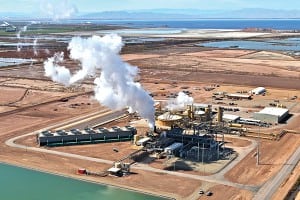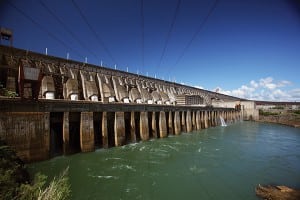water
-
Renewables
Broad Energy Policy Modernization Bill Clears Senate ENR Committee
Broad, bipartisan energy legislation that would allocate federal funding to grid technology research and demonstration along with a number of other initiatives, including cybersecurity and the energy-water nexus, has cleared the Senate Energy and Natural Resources Committee with an 18–4 vote. The committee’s chair, Sen. Lisa Murkowski (R-Alaska), and Ranking Member Sen. Maria Cantwell (D-Wash.) […]
-
Legal & Regulatory
States Sue EPA, Army Corps Over Final Waters of U.S. Rule with Reach Over Power Plants
Thirteen states are suing the Environmental Protection Agency (EPA) and the U.S. Army Corps of Engineers over the recently finalized Clean Water Rule, which they say illegally puts the federal government in charge of a majority of water and land resources in the U.S. North Dakota, Alaska, Arizona, Arkansas, Colorado, Idaho, Missouri, Montana, Nebraska, Nevada, […]
-
Nuclear
California Drought and Power Potential
California’s grid gurus say they can make it through this summer, but the future may pose real problems for a hydro-heavy regional system. As the grip of California’s four-year drought tightens, will the long-running event crimp electricity generation in the state? So far, according to the California Independent System Operator (CAISO), which dispatches much of […]
Tagged in: -
Geothermal
Mining for Lithium in Geothermal Brine: Promising but Pricey
Worldwide, the U.S. is the largest producer of geothermal power; however, geothermal energy provides less than 0.5% of total generation in the U.S. Given geothermal’s small piece of the U.S. electricity pie
Tagged in: -
Water
Feedwater Chemistry Meets Stainless Steel, Copper, and Iron
Alloys found in the condensate and feedwater systems of power plants include carbon steel for piping, pumps, and in some cases heat exchangers. Many systems still have some copper-based alloys from admiralty
Tagged in: -
Geothermal
New Zealand Strives to Maximize the Value of Geothermal Wastewater
Geothermal resources have important strategic value for New Zealand, as they are able to directly supply both heat and electricity (see “New Zealand Geothermal Industry Is Poised for the Future” in this
Tagged in: -
Press Releases
Video: A Novel Phosphorus-Free Cooling Water Treatment Solution
POWER Associate Editor Aaron Larson recently interviewed LaMarr Barnes, vice president of marketing and business development for U.S. Water Services Inc. U.S. Water is a Minnesota-based integrated water treatment solutions provider that has developed a phosphorus-free cooling water treatment solution, which may be beneficial for power generation companies. Many power plants add phosphate-based treatments to […]
-
Nuclear
Improved Resin Material Boosts Capture of Cobalt at Nuclear Plants
The Electric Power Research Institute (EPRI) has teamed with Purolite Corp. to begin the commercial manufacture of a new resin for removing radioactive elements from the internal water streams of nuclear power plants. The resin, called CoSeq, increases the amount and efficiency of cobalt (Co) removal compared to conventional resins. In-plant demonstrations have shown that […]
-
Hydro
Drought Stresses Brazilian Electricity Market
A lack of rainfall is hitting the power industry especially hard in parts of Brazil. According to the U.S. Energy Information Administration (EIA), the country depends on hydroelectricity for more than 75% of its electric power supply (Figure 2). But with reservoir levels at historic lows in some places, more electricity has been required from […]
-
Nuclear
Entergy: State-Proposed Forced Nuclear Outages at Indian Point are Unnecessary
Forced outages at Entergy’s two Indian Point nuclear units proposed by the New York Department of Environmental Conservation (DEC) to protect fish are “unnecessary” and a “terrible idea,” a company official testified at a public hearing on Tuesday. The DEC has proposed Entergy shutter the two units for at least 42 outage days every summer […]









